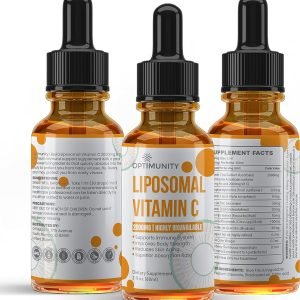High blood pressure, also known as hypertension, is a condition characterized by elevated levels of force exerted on the arterial walls as blood flows through them. This chronic condition can have serious consequences if left unmanaged.
It might increase the risk of heart disease, stroke, and other cardiovascular problems. Inflammation, on the other hand, is the body’s natural response to injury or infection, but when it becomes chronic, it can contribute to a wide range of health issues, including high blood pressure.
In this article, we will provide an in-depth analysis of does sea moss lower blood pressure. We will examine the mechanisms by which sea moss may exert these effects.
Table of Contents
What is High Blood Pressure?
High blood pressure, or hypertension, is a condition where the force of blood against the artery walls is consistently elevated. There are two types of high blood pressure: primary (essential) hypertension, which has no identifiable cause, and secondary hypertension, which is caused by an underlying medical condition or lifestyle factors.
The causes of high blood pressure can be multifactorial, including genetic predisposition, obesity, unhealthy diet, lack of physical activity, stress, excessive alcohol consumption, and smoking. Additionally, certain medical conditions, such as kidney disease, sleep apnea, and endocrine disorders, can contribute to the development of high blood pressure.
If left untreated, high blood pressure can lead to serious complications, such as heart disease, stroke, kidney disease, vision problems, and cognitive impairment. It is often referred to as a “silent killer” because it may not present any obvious symptoms until significant damage has occurred.
Managing blood pressure levels is crucial for reducing the risk of these complications and maintaining overall health. This can be achieved through lifestyle modifications, such as a healthy diet, regular exercise, weight management, and stress reduction techniques, as well as medication when necessary.
Summary: High blood pressure is a chronic condition with severe complications if untreated. It can be caused by various factors and managing it is crucial for overall health.
Inflammation and Its Role in Health
Inflammation is a natural physiological response that helps the body protect itself from harmful stimuli, such as pathogens, injury, or irritants. When the body detects these threats, it triggers an inflammatory response to eliminate the harmful agents and initiate the healing process.
Although acute inflammation is a necessary and beneficial response, chronic inflammation can be detrimental to health. Chronic inflammation occurs when the inflammatory response persists even after the initial threat has been resolved, leading to prolonged and excessive inflammation.
This state can contribute to the development of various chronic diseases, including cardiovascular diseases, diabetes, autoimmune disorders, neurodegenerative conditions, and certain types of cancer.
Chronic inflammation has been linked to the pathogenesis of high blood pressure, as it can contribute to the stiffening and narrowing of blood vessels, making it more difficult for blood to flow properly.
Additionally, inflammation can lead to the production of harmful substances that damage the lining of blood vessels, further exacerbating the problem.
Summary: Inflammation is a natural response, but chronic inflammation contributes to various diseases. It has been linked to the development and progression of high blood pressure.
Sea Moss: A Nutritional Powerhouse
Sea moss is rich in various essential nutrients, including:
- Minerals: Sea moss is an excellent source of minerals such as potassium, calcium, magnesium, iron, and zinc, which play crucial roles in various bodily functions.
- Vitamins: It contains significant amounts of vitamins A, C, E, and K, as well as B-complex vitamins, which are essential for overall health and well-being.
- Protein: Sea moss provides a good source of plant-based protein, containing all nine essential amino acids.
- Fiber: It is a rich source of dietary fiber, which promotes healthy digestion and may contribute to weight management.
- Antioxidants: Sea moss contains various antioxidants, such as carotenoids and flavonoids, which help protect the body from oxidative stress and inflammation.
Beyond its impressive nutrient profile, sea moss is also rich in compounds like sulfated polysaccharides, which have been studied for their potential health benefits, including anti-inflammatory, antimicrobial, and antiviral properties.
Summary: Sea moss is rich in minerals, vitamins, proteins, fibre, and antioxidants. Its impressive nutrient profile contributes to its potential health benefits.
Does Sea Moss Help With High Blood Pressure?
Several mechanisms have been proposed to explain how sea moss may help lower blood pressure. One potential mechanism involves the high mineral content of sea moss, particularly potassium and magnesium.
Potassium is an essential mineral that plays a crucial role in regulating blood pressure. It helps counterbalance the effects of sodium and promotes the excretion of excess fluid from the body, reducing the strain on blood vessels and lowering blood pressure. Sea moss is an excellent source of potassium, providing a significant amount in each serving.
Magnesium is another mineral found in sea moss that has been linked to blood pressure regulation. It helps relax and dilate blood vessels, improving blood flow and reducing the workload on the heart.
Magnesium deficiency has been associated with an increased risk of hypertension, making the magnesium content in sea moss potentially beneficial for those with high blood pressure.
Additionally, the antioxidants and anti-inflammatory compounds present in sea moss may contribute to lowering blood pressure by reducing oxidative stress and inflammation, which are known factors in the development and progression of hypertension.
Summary: The minerals, antioxidants, and anti-inflammatory compounds in sea moss may help lower blood pressure through various mechanisms, supported by some research studies.
Does Sea Moss Help With Inflammation?
The presence of sulfated polysaccharides, antioxidants, and other bioactive compounds in sea moss may contribute to its ability to reduce inflammation. Let’s look into how does sea moss reduce inflammation.
Sulfated polysaccharides, such as carrageenan, possess anti-inflammatory effects by inhibiting the production of inflammatory mediators like prostaglandins and leukotrienes. These compounds play a crucial role in the inflammatory response, and their inhibition can help reduce inflammation and associated symptoms.
The antioxidants found in sea moss, including carotenoids and flavonoids, also play a role in reducing inflammation. These compounds help neutralize free radicals and oxidative stress, which can contribute to the development of chronic inflammation and associated diseases.
Additionally, sea moss contains essential fatty acids, such as omega-3 and omega-6, which have been shown to have anti-inflammatory properties. These fatty acids can help modulate the inflammatory response and potentially reduce the risk of chronic diseases associated with inflammation.
Summary: Sea moss contains compounds like sulfated polysaccharides and antioxidants that exhibit anti-inflammatory properties, potentially reducing chronic inflammation.
Integrating Sea Moss into a Healthy Lifestyle
To potentially benefit from the blood pressure-lowering and anti-inflammatory effects of sea moss, it’s essential to incorporate it into a balanced and healthy lifestyle. Here are some recommended ways to integrate sea moss:
Dosage and forms
Sea moss is available in various forms, including dried whole seaweed, powder, capsules, drops and gels. The recommended dosage may vary depending on the form and individual needs, but a general guideline is to consume 2-4 grams per day. It’s essential to follow the instructions on the product label and consult with a healthcare professional for personalized recommendations.
Incorporating into the diet
Sea moss can be easily incorporated into various dishes, such as soups, smoothies, juices, and baked goods. The dried seaweed can be soaked and blended into beverages or added to soups and stews. The powder form can be mixed into smoothies, oatmeal, or yogurt.
Balanced diet and lifestyle
Although sea moss may offer potential benefits, it should be part of a comprehensive healthy lifestyle. A balanced diet rich in whole foods, regular physical activity, stress management techniques, and adequate sleep can all contribute to maintaining healthy blood pressure levels and reducing inflammation.
Precautions and potential side effects
Although sea moss is generally considered safe for most people when consumed in moderated amounts, there are a few potential side effects to be aware of. Sea moss may interact with certain medications, such as blood thinners and thyroid medications, so it’s essential to consult with a healthcare professional before adding it to your regimen.
Summary: To benefit from sea moss, it should be incorporated into a balanced diet and healthy lifestyle, considering dosage, forms, and potential precautions.
Alternative and Complementary Approaches
Although sea moss shows promise as a natural remedy for high blood pressure and inflammation, it’s essential to consider it as part of a comprehensive approach to managing these conditions.
Here are some alternative and complementary approaches other than sea moss for high blood pressure that can be combined with sea moss for potentially enhanced benefits:
Other natural remedies
Various other natural remedies have been studied for their potential in lowering blood pressure and reducing inflammation, such as garlic, hibiscus tea, ginger, turmeric, and omega-3 fatty acids. Incorporating a variety of these natural remedies into your diet may provide synergistic benefits.
Lifestyle modifications
Adopting a healthy lifestyle is crucial for managing high blood pressure and reducing inflammation. This includes following a balanced and nutrient-rich diet, engaging in regular physical activity, maintaining a healthy weight, managing stress through techniques like meditation or yoga, quitting smoking and limiting alcohol consumption.
Combining with conventional treatments
In cases where lifestyle modifications alone are not sufficient, sea moss and other natural remedies can be used as complementary therapies alongside conventional medical treatments prescribed by healthcare professionals.
However, it’s essential to communicate openly with your healthcare provider about any natural remedies or supplements you are considering to ensure safety and avoid potential interactions.
Mind-body approaches
Incorporating mind-body practices, such as mindfulness meditation, deep breathing exercises, and cognitive-behavioural therapy, can help manage stress and promote overall well-being, which may indirectly contribute to maintaining healthy blood pressure levels and reducing inflammation.
Monitoring and adjustments
It’s important to regularly monitor your blood pressure and inflammatory markers, such as C-reactive protein, to assess the effectiveness of your chosen approach. Based on the results, adjustments may be necessary in consultation with your healthcare provider to optimize your treatment plan.
Summary: Sea moss can be combined with other natural remedies, lifestyle modifications, and conventional treatments for a comprehensive approach to managing blood pressure and inflammation.
Conclusion
The potential benefits of sea moss in lowering blood pressure and reducing inflammation are promising, but more research is still needed to fully understand the correlation between sea moss and high blood pressure.
However, the impressive nutrient profile of sea moss, combined with its anti-inflammatory and antioxidant properties, make it a valuable addition to a healthy lifestyle.
Integrating sea moss into a balanced diet, along with regular exercise, stress management techniques, and other lifestyle modifications, can potentially contribute to maintaining healthy blood pressure levels and reducing chronic inflammation.











